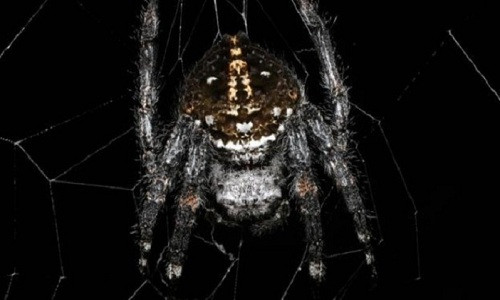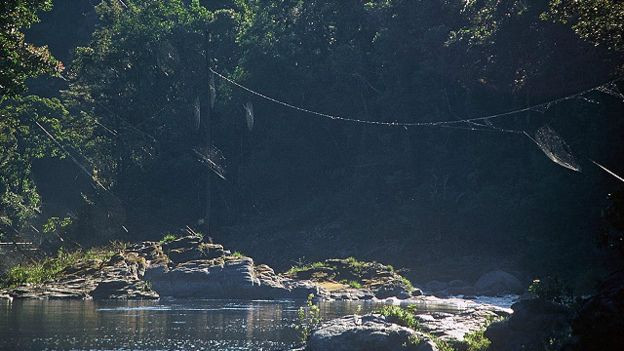The largest spider web in the world can cross a river
Although small and difficult to detect, Darwin's bark spider can create a net enough to cross a 25m wide river.
Darwin's bark spider can create the world's largest spider web
In 2010, a group of international biologists found the world's largest spider web in Madagascar. The author of the network is described on the 150th anniversary of Charles Darwin's book Origin of Species, so they are named Darwin's bark spider (Caerostris darwini).

Darwin's Bark Spider.(Photo: Matjaž Gregorič).
According to BBC, every network of Darwin's bark spider could cross a 25m wide river. However, this spider has never been known before.
To create the network, the spider shot a thread that stretched continuously from one side of the river. Air flow will blow silk across the river and create a bridge. At the center of this special bridge, Darwin's bark spider will create a spiral-shaped circle of up to 3 meters in diameter.
The massive size of the network makes it easy to imagine that the creator of it must be a giant spider, but the fact that Darwin's bark spider is not so big.
"Darwin bark spider is about 1.5cm across and 0.5g in weight, while male spider is much smaller with less than 1/10 female weight , " Matjaž Gregorič of the Slovenian Academy of Arts and Sciences in Ljubljana, said.

The spider silk spans across the river.(Photo: Matjaž Gregorič).
"Why are spider webs so big in size is an interesting question, but we still haven't found a solution," Gregorič said.
Gregorič and colleagues conducted research on the evolutionary relationship between spiders to understand the problem.
" The Caerostris spider silk seems to be tougher than other spider's silk and the spider web behavior of this species is quite special," explains Gregorič. Nephila's spider web is dense but their silk is not durable. Meanwhile, Caerostris creates a sparse network with a very tough thread.
Both of these techniques help to create strong bait-catching networks. By placing the network directly above the river, Darwin's bark spider can catch dozens of dragonflies, ephemera and many other energetic insects that live on the water.
"We hypothesize that this combination represents the ability to master the particular habitat of spiders. Other spiders do not use gas columns above the water, so perhaps spider web size and characteristics. Silk material is closely related to the ability to adapt to the living environment , "commented Gregorič.

The toughness of Darwin's spider web keeps the network from breaking when the prey throws.(Photo: Matjaž Gregorič).
In order to test this hypothesis, biologists study many of their spiders and silk. To examine the properties of silk, a machine held two ends of the thread and slowly pulled to the side until the thread broke, according to Gregori's description.
By this method, they discovered that spider silk is stronger than steel . It is also considered the toughest biological material ever known.
Durability and durability are two different concepts. Durable materials withstand the pressure and tough materials have elasticity, meaning they can absorb more energy before they break. This is very important for spider webs because each thread must withstand the impact and movement of the prey without affecting the rest of the entire structure.
The combination of durability and toughness is what engineers are looking for to create new materials, from armor to fishing nets. Scientists are aiming to create "future fibers" from spider silk and their goal is to produce products that resemble Darwin's spider web.
- One time reporter is up to 25m long, super spider is real?
- Revealing the secret of spiders creating the world's most durable silk thread
- The most expensive river in the world, the riverbed is filled with sparkling gold
- Mysterious world deepest river
- Decipher the secret of spider web
- Spider 'artist' traps prey with light
- Giant spider revives in England
- Thousands of wildebeest cross the river full of crocodiles
- 10 poisonous spiders are the most feared for humans
- The world's rarest silk weaves from the silk of millions of spiders
- The world's most exclusive spider egg wrap makes the researcher happy
- Huge individual spider species in the world
 Why do potatoes have eyes?
Why do potatoes have eyes? 'Tragedy' the world's largest carnivorous life: Death becomes ... public toilet
'Tragedy' the world's largest carnivorous life: Death becomes ... public toilet Tomatoes were once considered 'poisonous' for 200 years
Tomatoes were once considered 'poisonous' for 200 years Detecting microscopic parasites on human face
Detecting microscopic parasites on human face